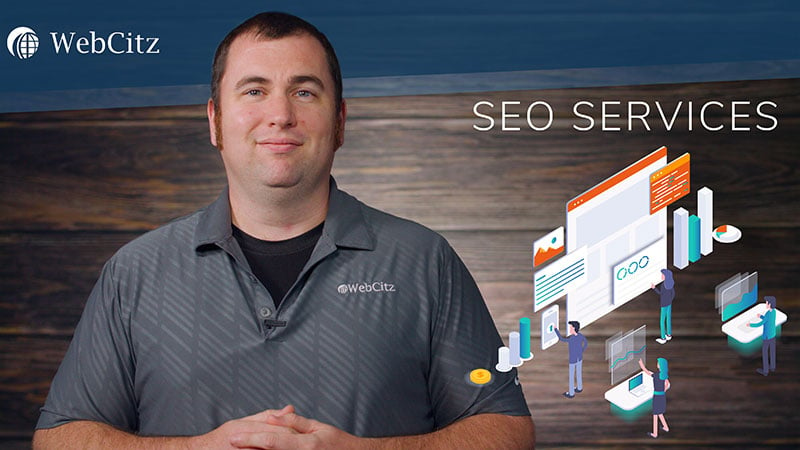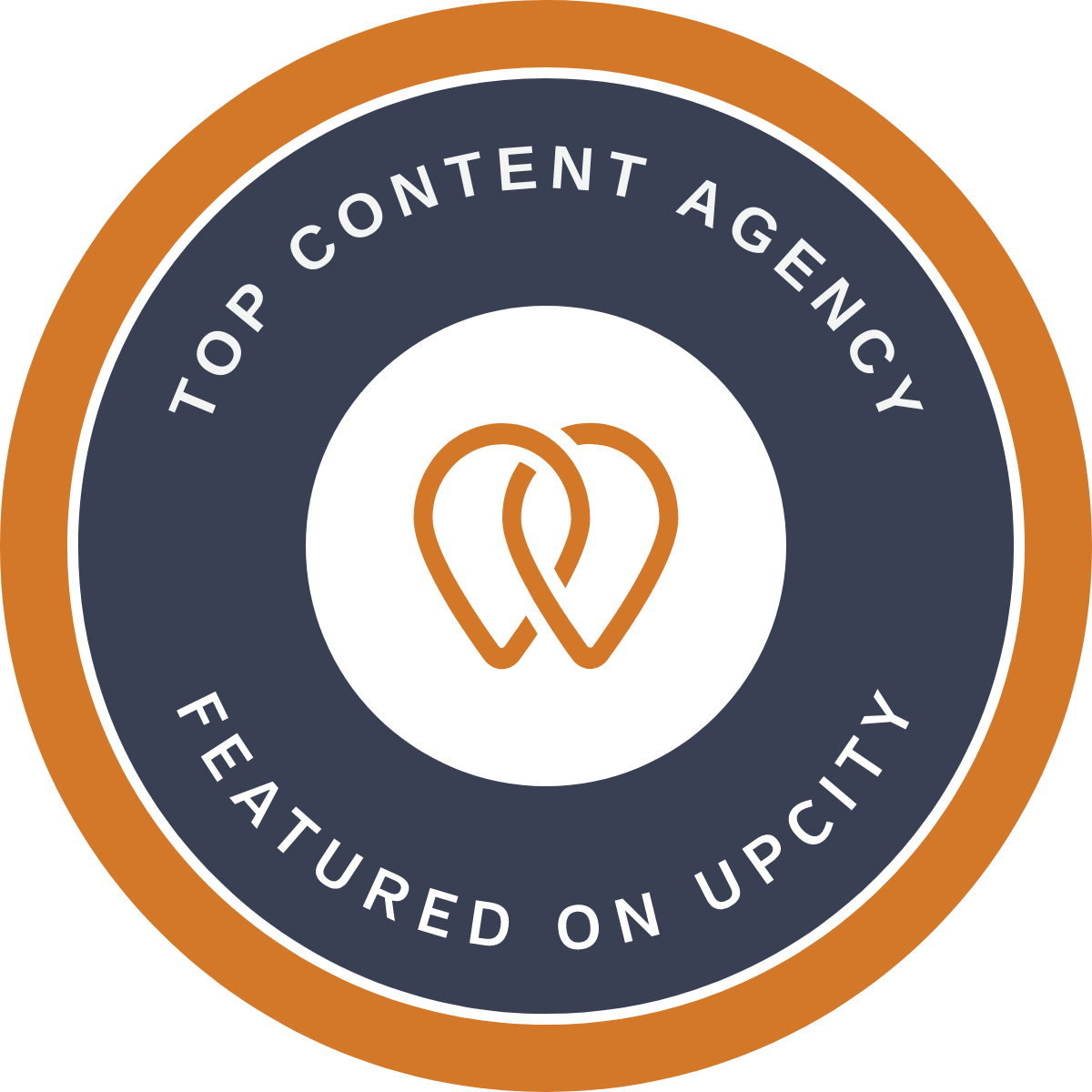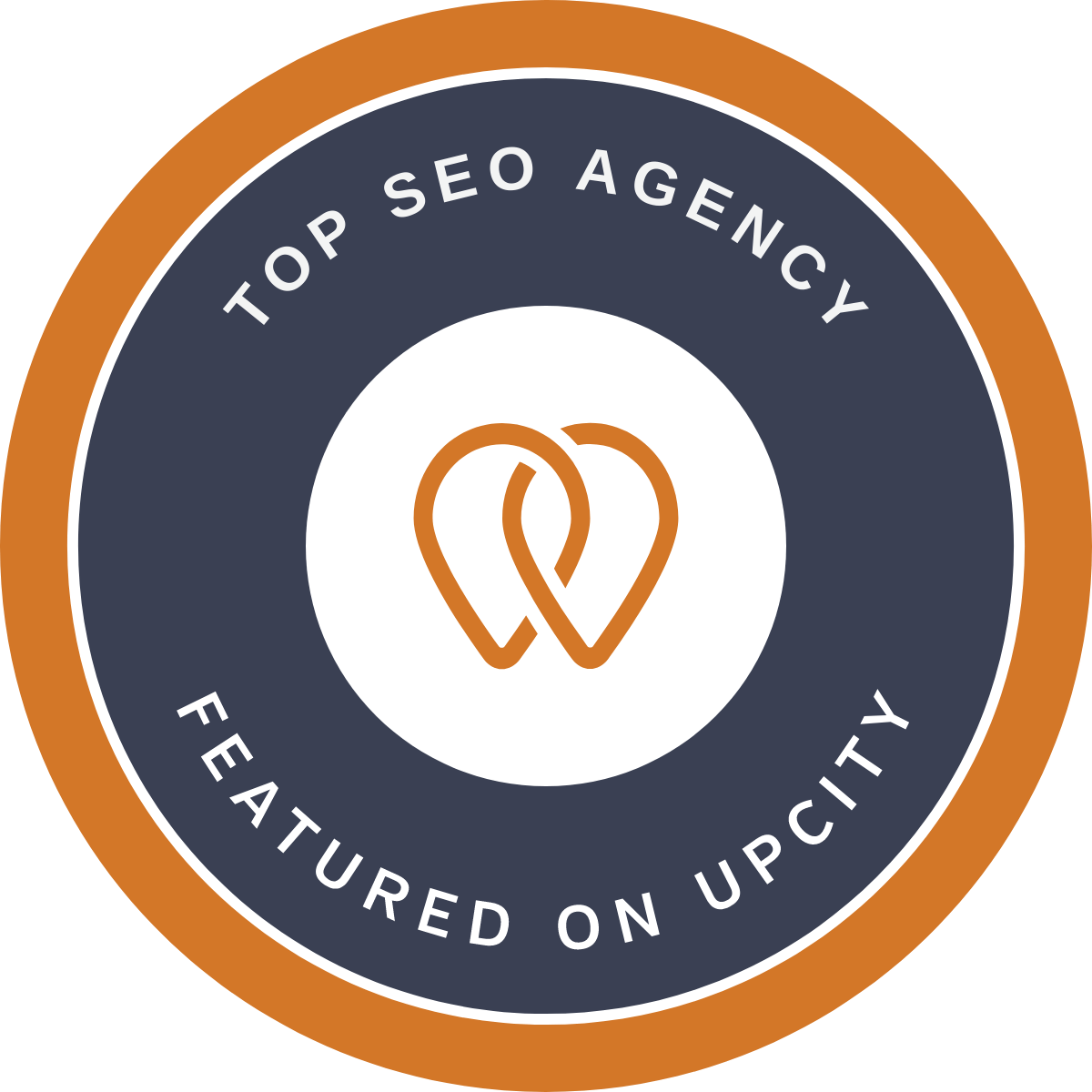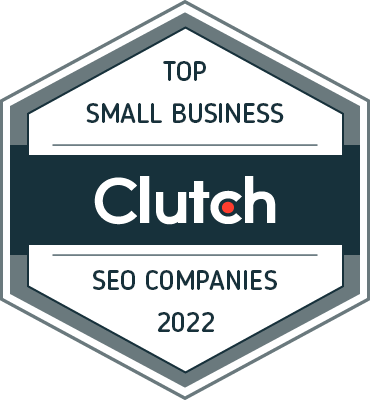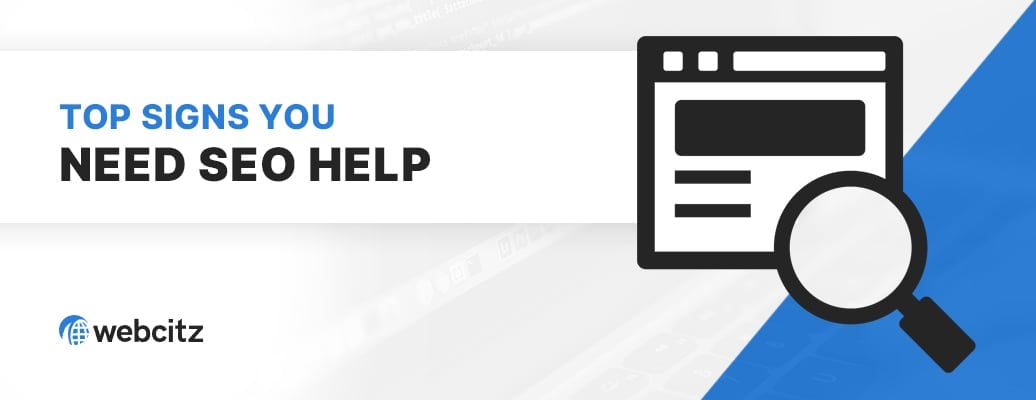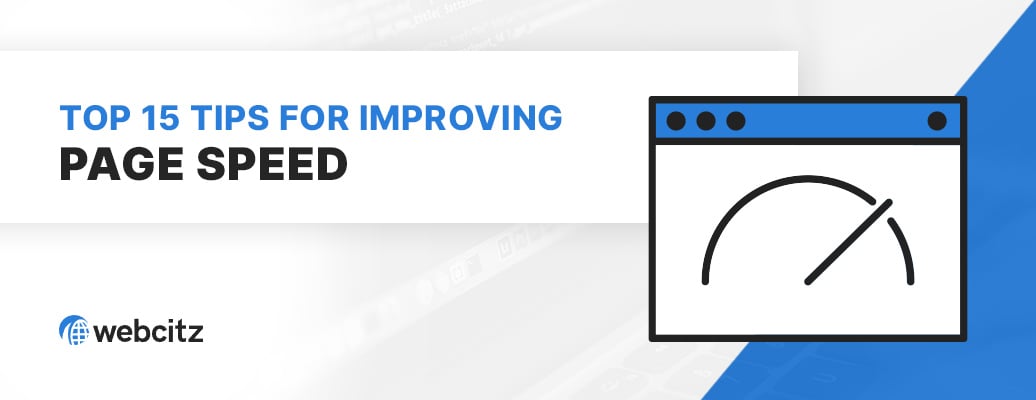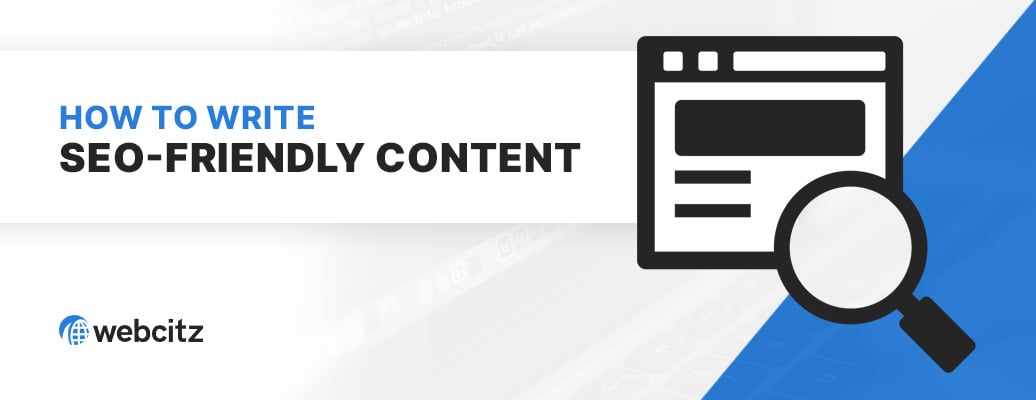Our On-Page SEO Services
When you implement SEO practices on your webpage to improve your user’s experience and move up your ranking with the search engine, you are performing on-page SEO. You can focus on various elements when you want to improve your ranking through on-page SEO.
Some of the elements that contribute to on-page SEO are:
- Title Tags: This is the title you give your page. The search engine will show this title in the SERP when the user enters a relevant query.
- Headers: The main text or icon that sits on top of your page. Every page of your website will contain this. The position can vary from page to page if necessary.
- Internal Links: Links within your own website. Clicking on these links will take the user to a different page or different segment in your own website.
- URL Optimization: URL is the first bunch of texts the reader or search engine will see when they click on your website link. The URL is like the first impression you create.
- HTML Coding: The language you will use to create your website. The codes determine the overall presentation and outcome of your website.
- Content On Your Page: The heart of your website. The reader is accessing your website for the content you have. They believe your content can answer their query or add value to them.
- Images: The pictorial representation of your content. It helps break the content and grab the attention of the reader. It also makes a strong impression in the minds of users. As long as it is relevant and appealing, it can add great value to your content.
- User Experience (UX): What the user derives by using your website. Did they get the information they were looking for? Did your website add value to them in some way? Did they have a smooth experience navigating through and using your website to gain information?
- Meta Description: The small gist of your website, the search engine, shows under your title tag on a SERP. It gives the reader more clarity on what your content is all about.
- Speed: How fast your page loads after clicking on the link. How fast can a reader navigate your website from one page to another? It includes the text, images, and all animations.
A Few of Our On-Page SEO Experts





On-Page SEO Cost Calculator
Answer a few questions to see estimated pricing, then call 800-796-8263 or send us an email to get started!
The Importance of On-Page SEO
A search engine is constantly on the move to ensure it provides quality content for its users. Google and other search engines will check the content and user experiences regularly. For them, the user experience is key.
In order to provide the best possible results for its users, the search engine must first know what the page is all about, what it covers, who the target audience is, and how authentic the data is. Hence the use of keywords and links.
When you use the right set of keywords and an optimal number of relevant links, you are showing the search engine what your page is about, how cohesive your entire page is, and how useful it can be to a reader. You are basically showing the search engine why your page is good enough to be featured among the top results for a search query.
When you don’t show all this or do not give it due to importance, the search engine will skip your page and move on to the next best fit. So, you need efficient on-page SEO practices to grab the search engine’s attention, retain it long enough to show your website is worthy enough, and prove you can add value to its users.
To break it down, you need on-page SEO for the following reasons:
- It can increase your visibility for a search engine
- Show clearly what your content is all about
- Reassure your content can indeed add value to the user
- To show you are connected to similar or relevant players in the market
- To promote associates, gain goodwill, and be promoted in return
- To show your content is easy to read, understand and derive information from
- To show that your page is up to date and has the most relevant and recent information.
Mold Removal Contractor
Roofing Company
RV Rental
Ecommerce Website
How To Implement On-Page SEO
Ok, now you know why on-page SEO is important and how it can help in boosting your visibility and business. So, how can you implement it? Where do you start, and what do you focus on?
1.) SEO Friendly URL
Ensure your URL is powerful and creates that first impact as soon as someone reads it. Your URL is what your reader sees first about you. It is the first impression they get before visiting your website. This is where you need to impress the search engine.
So, how can you create an URL that is both user and search engine friendly?
Include an important keyword that will show the reader and the search engine what your page is about. The word must be apt to describe everything about your business. Words are always better than numbers in an URL.
However, ensure your URL doesn’t run too long. It must be short and crisp but elaborate at the same time. You can use hyphens between the words to make them more readable.
For example, if you have a website offering clothes for the best value for money, you need to incorporate it in your URL. Just mentioning the best money value or clothing will not suffice as there are many other such players in the market. Use something like low-cost-high-quality clothing or something similar to show your readers what your page is all about at first glance.
2.) Self-Explaining Title Tags & Meta Description
The title of your page and the meta description below is what a reader sees first on the SERP. Only if these are interesting will they click on the link and enter the page to read the information you have on your page.
In 2021, Google will change how it handles page title tags. It rewrites the title of the page depending on the headings and anchor elements present on the page. This move ensures the title of the page is not misleading and reflects exactly what the page focuses on.
Now, this is not exactly very beneficial for the website. So, don’t mistake this for being a blessing, and go easy on your title tags. Google will pick the words its algorithm feels are important in your content and string them together to get a title tag. This need not be readable, interesting, or catchy. So, you stand to lose and not gain here.
It is safer to ensure you have a proper title tag with the right words in place so that Google does not replace your title and your readers understand clearly.
The title tag is an important ranking factor, so you must ensure it is on point.
3.) Meta Description
Next is the meta description. This is a small description of about 150 – 160 characters that you see below the title tag when you see the results on the SERP. It gives the reader a gist of what to expect if they click on the link, so if it is not engaging or clear, you will not get a good CTR (click-through rate), which is again important for your ranking.
You need to ensure your page’s meta description contains the main keyword, is not in caps, is readable, and is understandable.
4.) Good Schema
Schema is the structured data that helps the search engine understand the content better, thus making this an important component of your on-page SEO. You need to develop an attractive structure for the content on your page so that the readers will find it interesting and the search engine will also find it worthy.
When you structure your data, Google will even show it as a rich snippet on its SERP. Sometimes when a reader is looking for a quick answer, they will go through a rich snippet, and if yours is one of them, you get the click.
Wondering how to structure your data, so the search engine finds it worthy? You can use the many tools available to help structure your data. This includes a structured data mark-up helper by Google. If you just want some help structuring your content, you can always check Bing’s guide to mark up your website.
Once you structure your content, you can check both your and your competitors’ website structure. You can compare and make any changes you want.
5.) Impressive Headers
Have you always ignored the H1, H2, and H3 tags? And just gone with bold and regular text? Well, if you nodded yes, it is time to go back and put those headers to use. Search engines find content with a proper header to be more attractive, organized, and easy to read.
Just imagine opening a website to find some information, and it is just paras and paras of information with no header tags. You are bound to skim through the content and hit the back button. On the contrary, if the page has multiple headers of various sizes to differentiate the content, you will spend more time on the page and skim through the headings to see if it has what you are looking for.
Now, this is exactly what a search engine wants a reader to do. It wants its users to spend more time on a page and find the answers they are looking for, with ease and without wasting precious time. If your website can offer that, the search engine ranking will improve.
Ensure the subheadings are precise and to the point. If they do not explain what the paragraph or the entire content is all about, then there is no point in using the header tags. The words you use must describe what the content below is all about. Only then will it entice people to read further and eventually rate it.
6.) Copywriting
What is the first thing that impresses you on a webpage? Yes, visuals create a big first impression and are a good way to grab the reader’s attention; but how do you keep them engaged on your page? With good content of course.
If your page does not have good, compelling content, they are not going to stay on the page and spend time reading it. You can enhance the quality of your content using the following tips:
- Target Audience: Write your content for your target audience. You may want to impress and please all readers, but that is impossible. So, fix a target audience and write in a way that appeals to them. Your content must satisfy their search intent and pique their interest to scroll down till the end of your content.
- Introduction: Start with a strong, clear, concise introduction that tells the reader what the problem is and what the rest of your page is about. This is to hook the reader’s attention.
- Sections: Use subheadings to break up your content into concise sections. It will allow the reader to skim through the content and find what they want. Use bullet points, visuals, multiple short paragraphs, and tables to make the entire structure look attractive and readable. A reader would prefer to do this rather than search long paragraphs to find the necessary information.
- Sentences: Your sentences need to be short and crisp. Avoid long sentences that run for lines as the reader will lose track. Break up your content into structured paragraphs that look and read well.
- Keywords: Include the target SEO keywords seamlessly into your content. Ensure you do not stuff the keywords and use them in clear content instead. If it is a sentence with a bunch of target keywords, it will not read well.
- Add Value: You can use personal experiences and include stories and instances that will make your content both unique and interesting. You need to find a way to keep the reader hooked till the end. The longer they stay, the better it is for your ranking.
7.) Important Keywords
We came across target SEO keywords just now, but let’s get into more detail about that.
You may use various tools to generate the SEO keywords that will help a search engine find your content and rank it high. You may even use keywords that will catch the readers’ attention. Using the main keyword within the first 100 words of your content is important.
So, your introduction must contain the keyword to show the reader what the page is all about.
The idea is to convince the reader they are on the right page. Now, when you click on a link and enter a page, you don’t read every single line unless you are convinced the details you are looking for are in there. You first scan the introduction and the subheadings and read inside if you are sure the content suits your needs.
Similarly, when you use the target keyword in the beginning and at prominent places, it will catch the readers’ attention when they skim through your page. They will not bounce back, which can hurt your ranking.
8.) Density
Next is the density of these keywords. Using the keyword just once in the title or the introduction is not enough. As a reader goes through your content, the keywords are a visual reminder of the topic they are researching. The keyword is like an anchor for your content. It brings the reader back to where they started their search.
When you use the keywords throughout the content, readers who just skim through the page will be able to connect with it. They are on your page looking for something specific. If your content throws out those words on and off, it is a subconscious reassurance to the reader that they are in the right place looking for answers.
You can use a combination of long-tail keywords, target keywords, relevant keywords, and even synonyms. Search engines can pick all this. Ensure you use them seamlessly in your content and a good flow throughout.
9.) Avoid Stuffing
It can be tempting to randomly use all the keywords multiple times to attract the crawler bots. However, it is not a good idea. If your content has too many keywords, it is keyword stuffing. The bots might pick up your webpage like the one with the most number of keywords, but when it analyses your content, the value will come down drastically.
Imagine you are searching for content about how to clean a pan. If the content keeps mentioning pan or grime every two or three words, you may not find the content informative or compelling enough to read till the end. Instead, if the content mentions tough stains, burn stains, etc., you will keep reading it. You want to know various options to clean various stains on your pan, after all.
Search engines do not tolerate keyword stuffing. When the bots realize you are using too many of the keywords instead of providing valuable content, they will reduce your score, which in turn will negatively impact your ranking.
10.) Find The Right Keywords
Using the right set of keywords in the right places is very important for SEO. You can use various tools to identify keywords – both short and long-tail keywords, phrases, etc. Check your competitors and other players in your industry to understand what keywords are working or not working for them.
Going through and analyzing an existing website is the perfect way to get information without trial and error at your expense. If you want to take it one step further, you can enter the keyword to see the suggested list of questions. You can form your long-tail keywords and phrases from this intel.
11.) Satisfactory Content
Your content must satisfy the user’s search intent. A search engine must feel your content will answer the user’s query and provide valuable information. All this depends on the search intent of the user, which can be broadly classified as –
- Informational – Here, the reader is looking for information. They might type in a keyword or a full question and look for suitable answers.
- Navigational – Here the user knows what they are looking for. They will search for a particular page or website specifically.
- Commercial – Here, the user will compare commercial products and services to get the best offer or price possible; or to just compare.
- Transactional – Here, the user searches with an intent to buy. They know what they want to buy or from where they want to buy it.
Different keywords will have different search intentions. You can find the search intent behind your target keyword by looking at the results on the first SERP. If you see the words – “how,” “why,” and “who,” it indicates an informational search intent. Similarly, if you notice the words “best” or “top,” it reveals a commercial intent, and entering a particular website’s name and clicking only on that link signifies a navigational intent.
Once you address the user’s intent, your content must be understandable. Using simple language and breaking up the content into meaningful small sections that are easy to navigate through.
Remember, today; most people do their searches on their smartphones. So, your content must look attractive and be readable on a smartphone. Ensure your website is mobile compatible.
12.) Link Right Internally
It is common knowledge that Internal links are an integral part of SEO. These links help the search engine understand how each of your pages connects to one another. Search engines insist on this as an important factor for rankings because of user experience.
When a user is on your website, browsing through a page, they will come across some part they want more details about. Now, if you have more details about it on your website, they have no reason to search outside; but this cannot happen unless they know about it. When you link that page here, the user has to just click on the link.
The experience is smooth; they find all details in one place and spend more time on your website. It is a win-win for both you and the user.
When there are sufficient internal links with the right anchor text, users will keep going deeper into your website and clicking on more pages. They are spending more time reading more pages and showing the search engine they like the website as a whole.
One small point to remember when you come up with the clickbait keywords and anchor text is to not use the words you plan on using for the external links. It will confuse the user and the search engine as clicking a link will take the user to another page on your website, and suddenly, the next time they click on the same words, they are on another website.
You need to understand that internal linking does not help you like backlinks. They just help expand your visibility to the user and retain their attention longer. Since you can add these links as and when you want, they do not promote your ranking like external links.
13.) Remember External Links
Just because you have all the relevant information on your website does not mean you can forget the others. Be it your competitors or fellow players, when you show the search engine you are in good relation with them; it boosts your credibility. Though external links do not directly impact your ranking, it shows your information is credible and backed up by another source.
If you are quoting some example or someone, linking to the source can show the users and the search engine that your information is authentic and there is a solid reference for the same. However, ensure you don’t exhaust your anchor text set aside for ranking purposes on an external link.
14.) Use Appropriate Images
We all know how impactful an appropriate image can be when you click on a link for information. An image helps to break up the monotonous paragraphs of information. Using the right image will boost your user appeal and ranking with the search engine.
Remember, images take time to load. Using the perfect image that is bulky to load will hit your loading speed and bring down your user experience and negatively impact your ranking. So it is essential to optimize your images. Bring down the file size without affecting the file’s quality, so it loads fast and grabs attention. There are many tools that can help you here.
After optimizing your image, add the right text below it. These words help the search engine understand the image and connect it to your content. If found irrelevant, it can affect your ranking again.
15.) Work On Speed
As mentioned above, your page’s loading speed is very important – not just how fast your website loads on a desktop but a mobile phone too. When you add links and images to enhance the visibility and quality of your website, keep track of how it affects the loading speed on various devices.
Some images may take time to load on a mobile phone. You need to ensure mobile responsiveness for this. The website host, design of your website, and theme influence how your website loads on a desktop and a mobile phone.
You can use the various tools Google provides to check how mobile-friendly and how fast your website is. Search engines give a lot of weightage to these factors when it comes to ranking, as it directly impacts a user’s experience.
For example – if you are a regular user of a particular website on your work computer and try to access the same when you are outside, you are bound to use your mobile phone. Now, if it doesn’t load fast or fully, it will affect your experience. It will also lead you to search for an alternative, adding to the website’s bounce rate.
So pay attention to this factor and use the appropriate tools to help optimize and improve your ranking.
Assessing the On-Page SEO Value of Your Website
Once you do all of the above and improve your website on multiple fronts for the sake of on-page SEO, you need to know if your effort is paying off. Your website must be among the top ranking websites the search engine will show on a SERP.
Here are a few factors you can verify repeatedly to ensure you are on top of your game and your on-page SEO practices are on point.
- Use a tool and crawl your website to understand and ensure search engines can still crawl your content.
- Check your site architecture and structure with the help of an SEO audit. Other issues may also come to light.
- Check if your URLs, meta descriptions, and title tags are up to date and consistent.
- Check if your keyword is a part of your URL
- Verify if your keyword is present seamlessly throughout your content, the optimal number of times. Refrain from keyword stuffing
- Keep checking and tracking keywords for your website. If you find new ones, incorporate them and update your content.
- Have a clear value proposition for each page, and keep checking if the page delivers the same
- Identify your target audience and cater to their needs and interests.
- Come up with new page titles to keep up with the times and competition.
- Alter or add new meta descriptions to show the users and search engine that your content is updated
- Keep checking and editing your content from time to time.
- Add visual content to make the page look appealing. Ensure you optimize the visuals to prevent slowing down your website
- Add internal and external links. Check if they are working and relevant.
Regular changes will ensure your website is alive and attracting users. The more active and reliable your website and the content are, the happier the search engine will be with it. When the search engine algorithms are satisfied, your page will show up on SERPs for relevant search queries.
At the end of the day, isn’t that your aim? To be featured as one of the top results on a SERP when users with an intent search for information related to your business or service? You can reach more people, and your business can grow faster. The potential customers can convert into active customers, thus boosting your sales.
On-Page SEO FAQs
What is on-page SEO?
On-page SEO refers to the optimizations made directly within a webpage to improve its ranking in search engine results. This includes content enhancements, keyword placement, meta tags, internal linking, and more.
Why is on-page SEO essential for my small business?
On-page SEO ensures your website’s content is both relevant and accessible to search engines. Effective on-page strategies can lead to higher organic rankings, attracting more potential customers without the ongoing costs of paid advertising.
How does on-page SEO differ from off-page SEO?
While on-page SEO focuses on optimizing elements within your website, off-page SEO deals with external factors like backlinks, social signals, and other outside references. To perform on-page SEO, we’ll need access to your hosting service or website admin panel.
Can I choose specific pages of my website for optimization?
Yes, you can. Whether it’s your homepage, product pages, or specific landing pages, we can tailor our on-page SEO services to focus on areas you deem most important.
What are meta tags and why are they important?
Meta tags are snippets of text that describe a page’s content but aren’t visible on the page itself. They help search engines understand what the page is about. Properly optimized meta tags can improve click-through rates from search results.
How do you handle keyword optimization?
We start by researching and identifying keywords relevant to your business. Then, we ensure these keywords are strategically placed within your content, titles, headers, and meta descriptions without compromising readability. You typically want to target a single parent topic per page and it is important to understand latent semantic indexing (LSI) when writing page content.
Will on-page SEO affect the appearance of my website?
The primary focus is on the content and meta data, so the fundamental design remains unchanged. However, certain recommendations, like improving header structure or adding alt-text to images, may be suggested to enhance SEO and user experience.
How do you approach content optimization?
Content is key in on-page SEO. We ensure it’s high-quality, relevant, and valuable to your audience. This might involve refining existing content, eliminating duplicate content, or even recommending new content pieces. Yes, AI-generated content might be used, but it would always be reviewed by members of our team for accuracy and clarity.
How long will it take to see results after on-page optimizations?
While on-page SEO can lead to immediate improvements in rankings, the exact time to see significant results varies based on competition, current site performance, and other factors. Typically, noticeable changes occur within 1-3 months, but it can take considerably longer.
Why should our business choose your agency for on-page SEO services?
Our team is proficient in the latest on-page SEO techniques and understands the unique challenges faced by small businesses. We prioritize clear communication, tailored strategies, and measurable results to ensure you get the best ROI.
Final Thoughts on On-Page SEO
SEO is an integral part of any successful website – check out our SEO services case studies for proof! There is a big difference between a website that just provides content and a website that implements SEO practices. Over the years, as everyone creates a digital presence for themselves, the competition to make a mark for yourself has become the major focus point of a company.
Along with quality services, implementing or drafting a strategic plan to make your presence online is very important. If you want your website to attract users, then you must understands the role SEO plays in creating that website for you, where customer feels comfortable to do his business. Implementing and following on-page SEO can benefit your website in the long run. Ensure you implement the above stated strategies and let your business flourish to a newer heights.
Hear what our customers are saying
